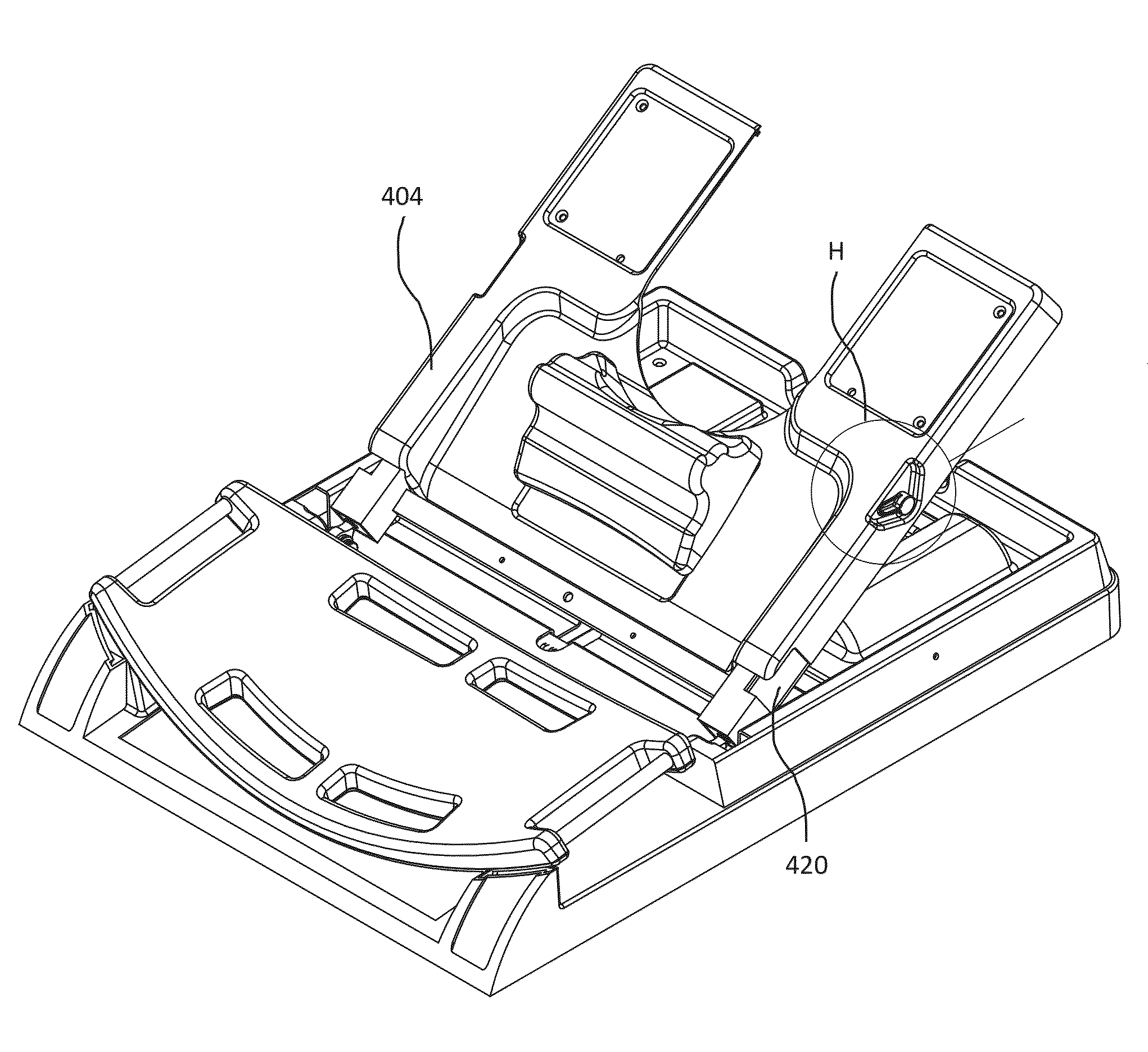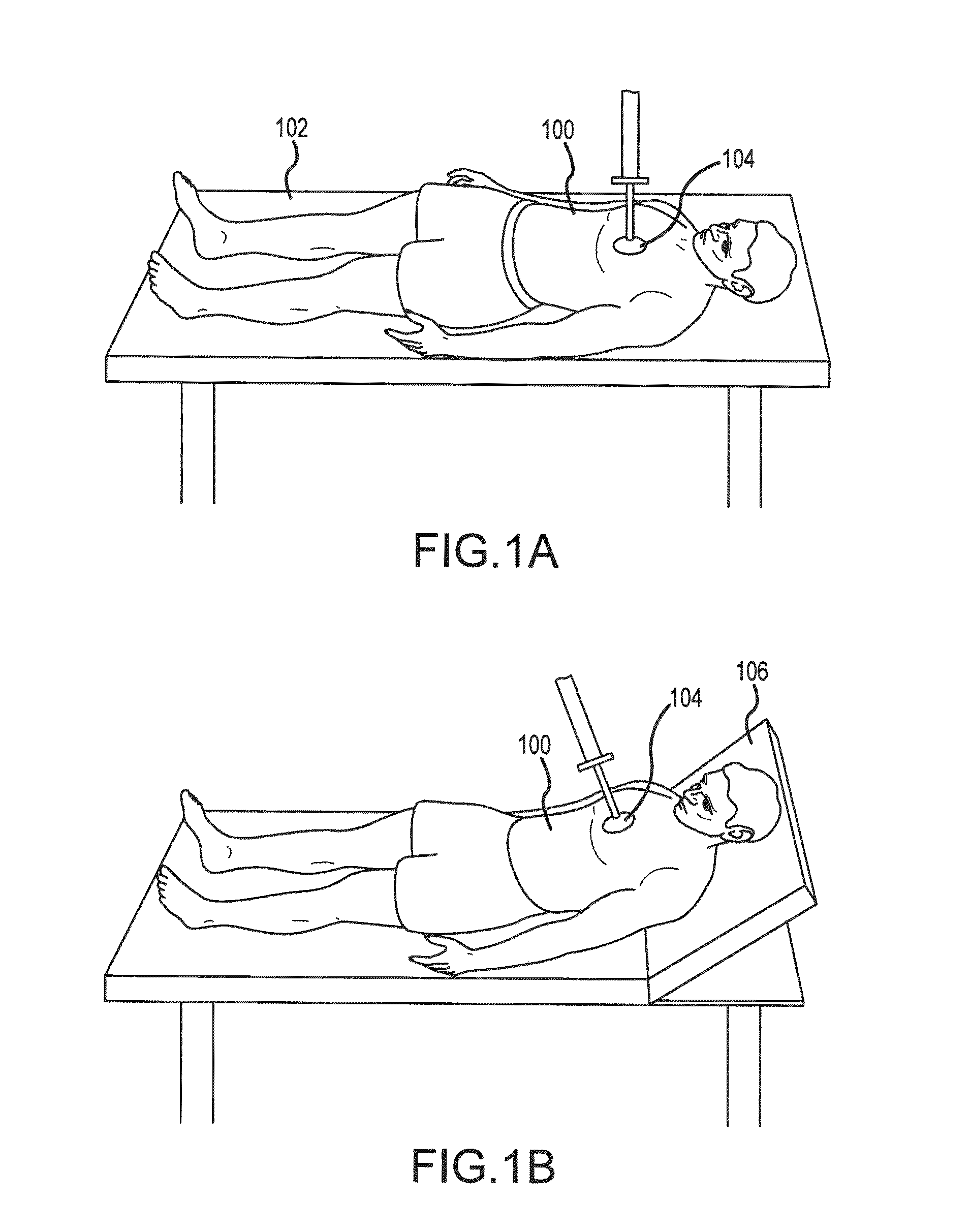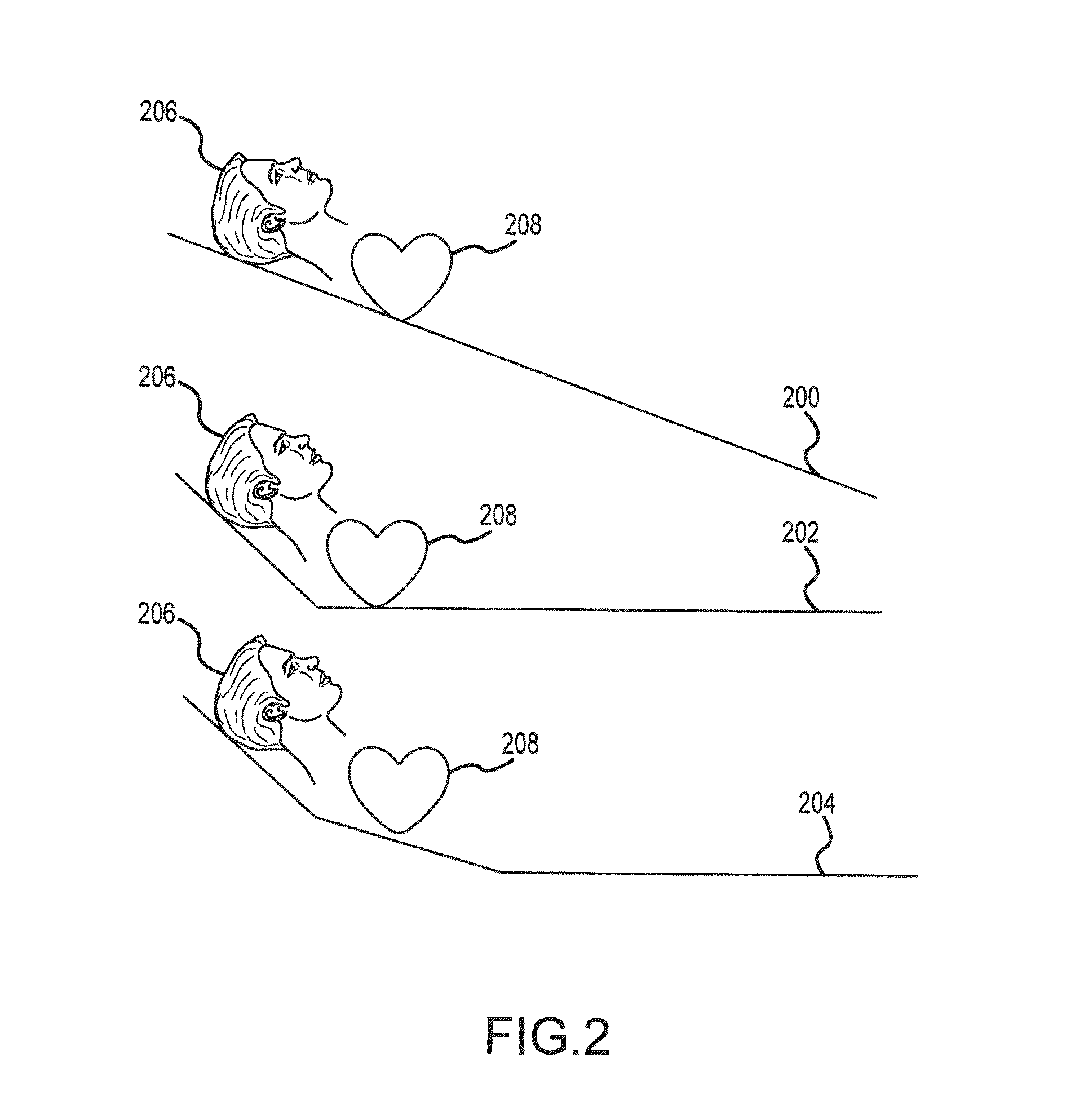Support devices for head up cardiopulmonary resuscitation
a support device and cardiopulmonary technology, applied in the direction of artificial respiration, heart stimulation, therapy, etc., can solve the problems cerebral output, and lower right-atrial pressure and intracranial pressure, and achieve effective and safe, cerebral output, and systolic blood pressure (sbp). , the effect of increasing cerebral perfusion pressur
- Summary
- Abstract
- Description
- Claims
- Application Information
AI Technical Summary
Benefits of technology
Problems solved by technology
Method used
Image
Examples
example 1
[0160]An experiment was performed to determine whether cerebral and coronary perfusion pressures will remain elevated over 20 minutes of CPR with the head elevated at 15 cm and the thorax elevated at 4 cm compared with the supine position. A trial using female farm pigs was performed, modeling prolonged CPR for head-up versus head flat during both conventional CPR (C-CPR) and ACD+ITD CPR. A porcine model was used and focus was placed primarily on observing the impact of the position of the head on cerebral perfusion pressure and ICP.
[0161]Approval for the study was obtained from the Institutional Animal Care Committee of the Minneapolis Medical Research Foundation, the research foundation associated with Hennepin County Medical Center in Minneapolis, Minn. Animal care was compliant with the National Research Council's 1996 Guidelines for the Care and Use of Laboratory Animals, and a certified and licensed veterinarian assured protocol performance was in compliance with these guideli...
example 2
[0186]CPR was administered on pigs with various positions of the head and body according to the methodology described by Debaty G, et al. in “Tilting for perfusion: Head-up position during cardiopulmonary resuscitation improves brain flow in a porcine model of cardiac arrest.”Resuscitation. 2015: 87: 38-43. Specifically CPR was administered to pigs in the supine position, in a 30° head up position, and in a 30° head down position using the combination of the LUCAS 2 device to perform chest compressions at 100 compressions per minute and a depth of 2 inches along with an ITD. The data collected demonstrates that elevation of the head during CPR has a profound beneficial effect on ICP, CerPP, and brain blood flow when compared with the traditional supine horizontal position. With the body supine and horizontal, each compression is associated with the generation of arterial and venous pressure waves that deliver a simultaneous high pressure compression wave to the brain. With a pig's h...
example 3
[0187]Blood flow to the brain was assessed during CPR using the LUCAS device and the ITD when pigs were on a tilt table in the flat (supine) position, and in the 30 degree head up tilt and 30 degree head down tilt position. The methods were described in the article by Debaty et al, referenced above. The findings are shown in FIG. 26. There was a marked decrease in blood flow to the brain with the head down tilt (HDT) and a marked increase in blood flow to the brain with the head up tilt (HUT). In this study, the ITD was needed to maintain blood pressure, as reported by Debaty et al. This study demonstrates the benefits of head up CPR when CPR is performed with the LUCAS device and the ITD.
PUM
 Login to View More
Login to View More Abstract
Description
Claims
Application Information
 Login to View More
Login to View More - R&D
- Intellectual Property
- Life Sciences
- Materials
- Tech Scout
- Unparalleled Data Quality
- Higher Quality Content
- 60% Fewer Hallucinations
Browse by: Latest US Patents, China's latest patents, Technical Efficacy Thesaurus, Application Domain, Technology Topic, Popular Technical Reports.
© 2025 PatSnap. All rights reserved.Legal|Privacy policy|Modern Slavery Act Transparency Statement|Sitemap|About US| Contact US: help@patsnap.com



